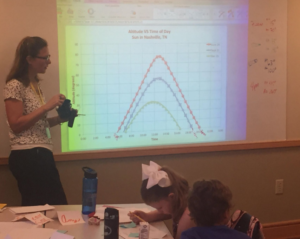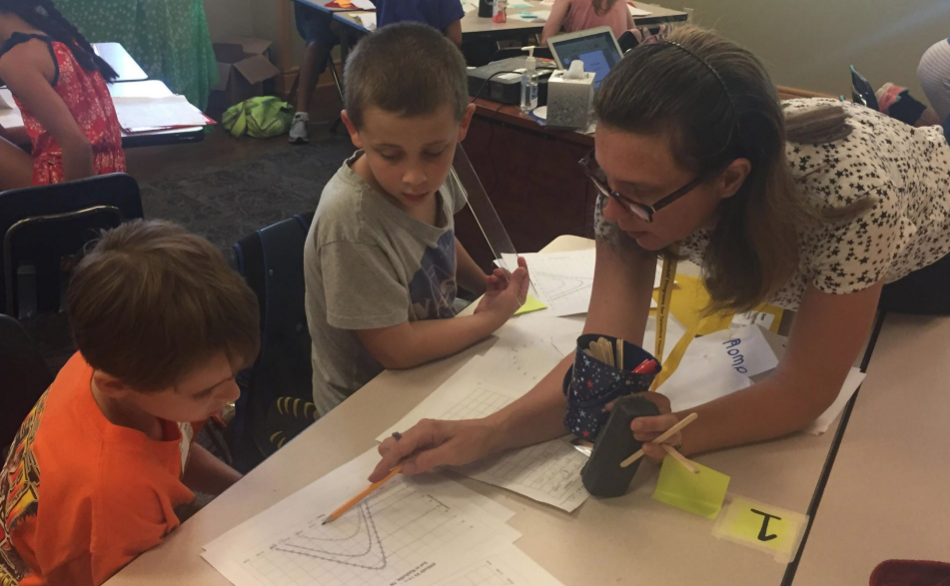Summer SAVY 2018: Session 3, Day 4 – Observational Astronomy (Rising 3rd/4th)
While our fourth day was full of the Sun and the Moon, we sadly didn’t get to actually observe either one! Darn clouds (and rain)… We started where we left off yesterday, with graphs! They’re some of my favorite things because they are scientific pictures (and therefore are worth a thousand words). We first plotted some more solar altitude and azimuth data that I was able to gather using a quadrant and compass yesterday and this morning. I also introduced the polar data plot. It’s a bit confusing to start with but they can be extremely helpful! See the example picture!
Then we looked at some data that I got online from the US Naval Observatory Data Services website (rather old school but has great information!). We worked on interpreting the graphs and comparing them and looking at different times of the year. After working with all of our graphs for a little bit, I showed them a set of graphs that solar panel installers work with that have a number of similarities to what we have been using. The solar panel installers also use analysis of the shading at the site to get optimal power generation results. Here’s the article I got the information from, you may find it interesting to read in general: Solar Site Evaluation.
Then we headed to a room that can get really dark for our Moon observations! The students provided their heads for Earth and I provided sunlight and styrofoam Moons. First, students had to use a coordinate system to determine provide place to observe the Moon’s phase then had to use that evidence they collected to answer some questions and evaluate some student debates. We did discuss eclipses a bit and how you can find information – one of my favorite sites is TimeAndDate.com as there are good graphics and it is set up well.
Once we had some knowledge about the Moon, we had to work on observing it – when to observe and where to see it so we incorporated the time of the day and the phase of the Moon to answer questions like this: The Moon is 1st Quarter and it’s just starting to rise – what time is it? OR The Moon is highest in the sky and it is 6am – what phase is it? Your student should hopefully be able to show you by using their body how they can see different times of day and then how to see if something is rising or setting. We’ll work with this a bit more tomorrow.
If you’re thinking about what to talk about with your student, I would talk about graphing and the different types of them as well as talking about visualizing observing. You may also wish to investigate when the next nearby solar eclipses are! Looking forward to meeting you!
– Dr. G
Pictures from Our Day



